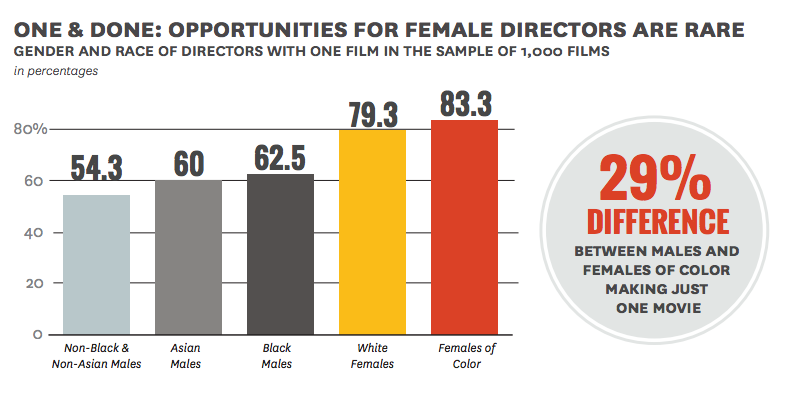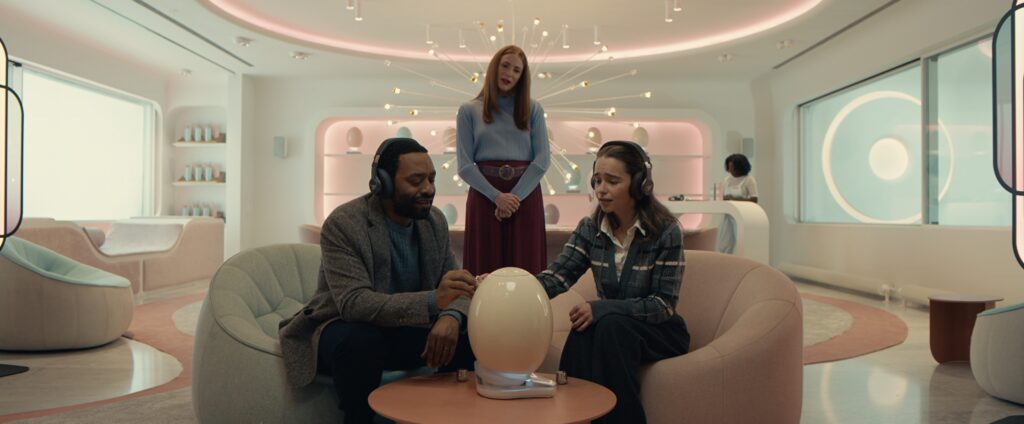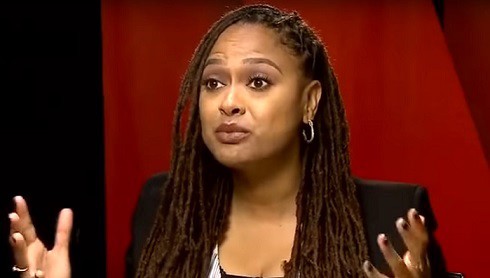
A new study from USC Annenberg’s Media, Diversity, & Social Change (MDSC) Initiative found that the past 10 years have seen little to no change for women directors and directors of color. In fact, “Inclusion in the Director’s Chair?: Gender, Race, & Age of Film Directors” by Dr. Stacy L. Smith, Dr. Katherine Pieper, and Marc Choueiti concluded that “Hollywood is anything but the land of opportunity.”
Smith, Pieper, and Choueiti conducted a “comprehensive intersectional analysis of directors of motion pictures to date” by examining the highest grossing 1,000 films from 2007 to 2016 and their filmmakers’ gender, race, and age.
According to the research, there was an overall ratio of 24 male directors to every one female director on the analyzed films. Of the women directors, only seven were non-white: three black women, three Asian women, and one Latina woman.
Smith, the founding director of the MDSC Initiative, said in a statement, “For the last decade, female directors of color have been nearly invisible in the director’s chair.” She added, “When Hollywood thinks female director, they think ‘white woman.’ When only seven directing opportunities across 1,000 go to women of color, hiring practices need to change.”
One of the main priorities at Women and Hollywood is to keep this issue in the front lines and to remind people that change does not happen quickly. In recent months we’ve focused on how politics are continually failing minorities and women, but this MDSC study shows that Hollywood is no better. And it’s not getting any better.
“Our research consistently shows that behind the camera, directing is predominantly an occupation held by white males,” Smith commented. “When the lens is this skewed, it offers a tilted view of society to audiences — one that lacks the perspective of women and people of color.”
We’ll keep reporting on this skewed perspective and promoting women directors of every race, nationality, and age. And we’ll continue to discuss any and all research like this MDSC study. Because we don’t want the next decade to be exactly like the last.
Here are the highlights from “Inclusion in the Director’s Chair?”:
2016 looks a lot like 2007:
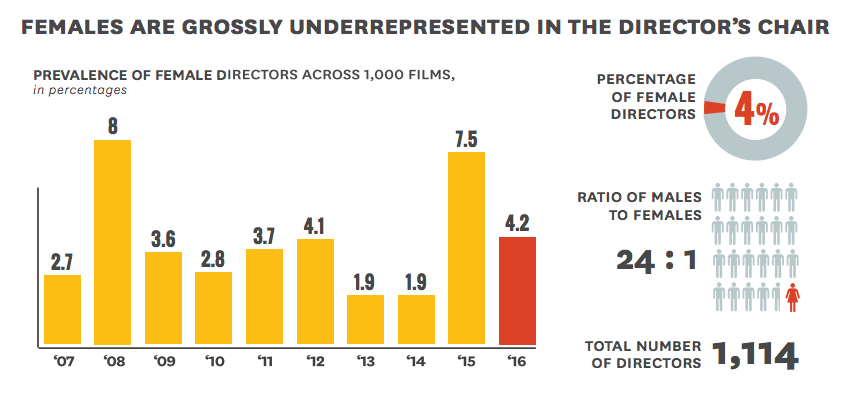
Of the 1,114 directors evaluated between 2007 and 2016:
- 96 percent were male and 4 percent were female.
- The percentage of female directors in 2016 (4.2%) does not differ from the overall point statistic, nor does it deviate by 5 percent from the percentage of female directors in 2007 (2.7%).
- There was “no meaningful change in the prevalence of female directors” across the top-grossing films.
- 612 unique or individual directors worked across the 1,000 movies evaluated. 5.7 percent were women and 94.3 percent were men. That is a gender ratio of 16.5 male directors to every one female director.
Directors — male and female — are overwhelmingly white:
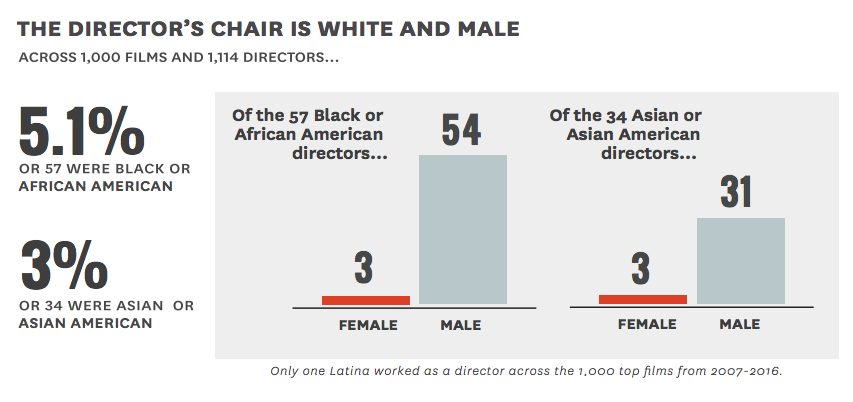
Across the 10-year sample and the 45 women directors evaluated:
- There were only seven women of color.
- Three were black, three were Asian, and one was Latina.
Of the 1,114 directors assessed between 2007 and 2016:
- 5.1 percent were black. Of these 57 directors, 54 were male (94.7%) and 3 were female (5.3%).
- More than three-quarters (78.6%) of the films from black directors featured one or two top-billed black actors. Only 21.4 percent of the films featured two top-billed non-black actors.
- Most films from black directors were dramas (41.1%) and comedies (37.5%). Action movies accounted for 10.7 percent, with few black director-helmed science fiction/fantasy films (3.6%), thrillers (3.6%), or horror movies (1.8%). Only one animated film was helmed by a black director.
- Twenty-seven black directors (4.4%) of the 612 individual directors helmed at least one top-grossing movie between 2007 and 2016.
- Three percent were Asian. Of these directors, 91.2 percent were men and 8.8 percent were women.
- “Asian directors were most likely to helm animated (27.3%) and horror films (24.2%). Five Asian filmmakers created movies in the action arena (15.2%), five in the science fiction/fantasy realm (15.2%), and four in dramatic movies (12.1%). Only one Asian director helmed a thriller (3%) or a comedy (3%).”
- About one-fifth (19.2%) of the movies from Asian directors featured one or two top-billed Asian actors.
- Of the 612 individual directors evaluated, only 2.8 percent were Asian.
Women have (extra) limited opportunities:
- Female directors of top-grossing movies tend to work from their 30s to their 60s. Male directors work across seven decades — from their 20s to their 80s.
- “The span of females’ careers is limited whereas for males it appears to be limitless.”
- Women most frequently directed dramas (40.9%), comedies (29.6%), and animated features (11.4%). Women directors rarely helmed science fiction/fantasy movies (6.8%), action movies (4.6%), or thrillers (4.6%). Only one woman directed a horror film (2.3%).
“In Hollywood, female directors are usually ‘one and done’”:
Of the 1,114 directors assessed:
- More than half (56.2%) only worked on a single top-grossing film in the years evaluated. 80 percent of women made only one movie in the years studied, as compared to 54.8 percent of men.
- More than 45 percent of the male directors helmed two or more films over the 10 years. This is true of only 20 percent of the female directors. Male directors made as many as 14 films between 2007 and 2016, while women directors topped out at four.
Studios need to make inclusivity a priority now:
Of the 1,114 directors evaluated in the study:
- “Across the 10-year time frame, none of the companies examined in this report have released at least one movie per year with a female director that appeared in the sample of top-grossing fare.”
- Warner Bros. had the highest number of female-directed films over the past 10 years. 20th Century Fox, Sony, and Universal each released seven female-directed movies since 2007.
- With three each, Lionsgate and Paramount released the fewest movies with female directors.
- Lionsgate had the most film releases (16) with black directors. Sony released nine films with a black director.
- Disney distributed zero movies from a black director in the last decade.
- Universal distributed the most Asian-directed films (10). Lionsgate released one movie from an Asian director. Sony and Warner Bros. released two films each by Asian directors.
Click here to access or read the entire MDSC report.
